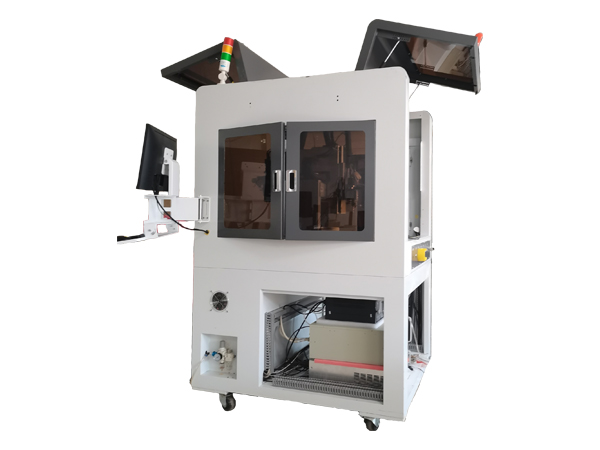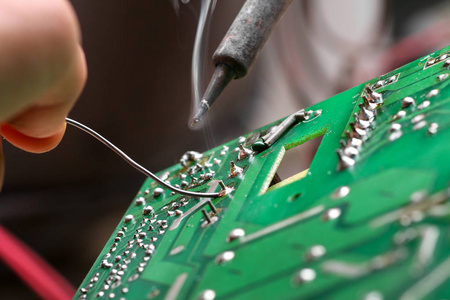Detailed Comparison: Automated Laser Soldering vs. Manual Soldering
In an era of rising labor costs, automation has become a strategic imperative for business development. Laser soldering machines are now widely adopted in the automated soldering equipment market. To meet industrial automation demands, production-line laser soldering robots have emerged as an innovative technology, garnering significant attention in the automated soldering sector. But what specific advantages do these automated laser soldering robots offer compared to manual soldering?

Working Principle of Laser Soldering Machines
Laser soldering machines operate by transmitting laser beams through optical fibers, where high-energy laser pulses deliver localized heating to microscopic target areas. The molten solder balls produced through this process exhibit minimal oxidation, resulting in exceptionally precise soldering with superior joint quality. This method proves particularly advantageous for applications demanding ultra-high precision soldering performance.
Songsheng Optoelectronics' Technological Leadership
As an innovator in laser temperature-regulated soldering technology, Songsheng Optoelectronics has dedicated over ten years to advancing laser precision welding solutions. The company's pioneering work in constant-temperature laser soldering has found extensive applications across critical industries including 3C consumer electronics, 5G communications, new energy vehicles, display and semiconductor manufacturing, and aerospace sectors. These technological breakthroughs have effectively addressed productivity limitations and outdated processes in SMT and PCBA manufacturing, driving the industry toward intelligent, unmanned production systems with significantly improved yield rates.
I. Advantages Over Manual Soldering
Labor Instability
Manual operations face frequent staff turnover, leading to increased training and management costs. In contrast, automated laser soldering robots only require workers for loading/unloading parts, eliminating training needs and allowing immediate operation.
Quality Consistency
Human production causes quality fluctuations, high defect rates, and inconsistent output, making quality control challenging. Laser soldering robots maintain stable performance without fatigue, skill variations, or emotional factors, ensuring uniform quality and sustained productivity.
Production Flexibility
Seasonal demand fluctuations create quality instability during peak periods, hiring difficulties when busy, and idle labor costs during slow seasons. Soldering robots operate 24/7 without fatigue, preventing both workforce shortages and unnecessary labor expenses during low-demand periods.

II. Material Cost Control
Against the backdrop of rising raw material costs, compressed profit margins, and intense homogeneous competition, manual soldering demonstrates poor material control with significant wastage. In contrast, robotic soldering achieves 15%-30% material savings compared to manual operations.
III. Process Quality Advantages
Manual soldering exhibits excessive operational variability, fundamentally incapable of achieving standardized, consistent results with substantial quality fluctuations.
Robotic soldering ensures fully controllable processes, guaranteeing soldering quality by eliminating cold solder joints and false soldering defects.
IV. Summary Comparison Table
Feature | Automatic Laser Soldering Machine | Manual Soldering |
Precision | Extremely high (micron-level) | Limited (depends on operator skill) |
Consistency | Excellent (program-controlled, highly repeatable) | Poor (affected by operator skill/fatigue) |
Heat Impact | Minimal (localized precise heating) | Significant (direct soldering iron contact) |
Speed/Throughput | Very high (millisecond-level per joint, 24/7 operation) | Low (second-level per joint, labor-dependent) |
Initial Investment | Very high | Very low |
Labor Cost | Low (requires few technicians) | High (major cost component) |
Long-term Cost/ROI | Generally better for mass production | Potentially lower for small batches/repairs |
Applicability | Miniaturized, high-density, thermal-sensitive, high-reliability, mass production | Versatile, prototyping, small batches, rework, complex structures, non-standard |
Flexibility | Medium (requires programming/debugging) | Extremely high (real-time adjustments) |
Joint Quality | High and consistent (few voids, good wetting) | Variable (skill-dependent, higher defect risks) |
Reliability | Typically higher (lower thermal stress) | Higher risks (overheating, potential cold joints) |
Work Environment | Clean (requires laser safety measures) | Potential fume issues (requires ventilation) |
Data Traceability | Comprehensive | Difficult |
Skill Requirements | Programming, process, maintenance engineers | Skilled operators (difficult to tra |
Development Trends
With the ongoing miniaturization and integration of electronic products, along with increasingly stringent requirements for quality and reliability, automatic laser soldering is seeing rapidly expanding applications. Particularly in high-end fields like consumer electronics (smartphones, wearables), automotive electronics, optical communications, and medical electronics, laser soldering has become either the mainstream or preferred process. Manual soldering is shifting more toward small-batch production, flexible manufacturing, and rework/repair scenarios. The two approaches do not represent complete replacement but rather complementary coexistence based on product characteristics and production needs. Moving forward, laser soldering technology itself is developing toward higher efficiency, greater intelligence (such as AI-optimized processes), and lower costs.
Contact: Mr.Xiao
Phone: +86-13385280662
E-mail: market001@whlaser.cn
Add: Room 02, Floor 5, Building 9, Gezhouba Sun City, No. 40, Gaoxin 4th Road, Donghu New Technology Development Zone, Wuhan